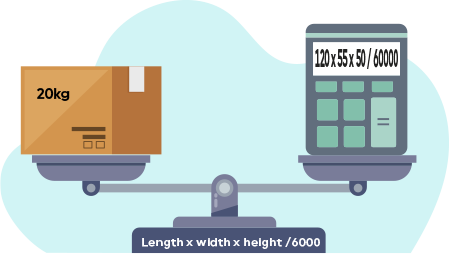What exactly is volumetric weight?
Volumetric weight is determined by calculating the package's dimensions—length, width, and height—and converting these measurements into volumetric kilograms. Different couriers and shipping services use various formulas to calculate this weight. For instance, a courier might use one formula for express shipping and another for economy shipping.
Pro Tip
Use snug packaging to minimize the dimensions of your parcel, reducing the volumetric weight and lowering shipping costs. Always compare couriers to find the best rates based on their volumetric weight calculations.
Why is volumetric weight charged?
The bigger an item is, the more room it takes up on a vehicle or aircraft, and therefore the more it costs to send. If an item is large but light, the price will be based on the size rather than the weight.

Even though this box weighs only 2kg, its large size means its volumetric weight is over 20kg.
Calculate the volumetric weight for courier shipments.
Different courier companies have their own methods, but usually, you multiply the parcel's length, width, and height (in centimeters) and then divide by 5,000. You can use the tool above to do the math for you, or you can calculate it yourself like this.

Multiply the length, width, and height.
Multiply the length, width, and height of your parcel in centimeters,like 20cm x 20cm x 30cm.
Divide the result by 5,000.
You've now calculated the volumetric weight in kilograms.*For calculations using inches, divide by 305.
Compare this to the actual weight.
If this number is higher than the actual weight, your shipment will be billed based on the volumetric weight.Calculate the volumetric weight for your freight shipment.
For most road and air freight services, the volumetric weight is calculated by multiplying the length, width, and height of the shipment in centimeters and then dividing by 6,000.

Calculate the total chargeable weight for a shipment.
Different couriers have their own methods for calculating the total chargeable weight of a shipment, which can significantly affect the cost.





